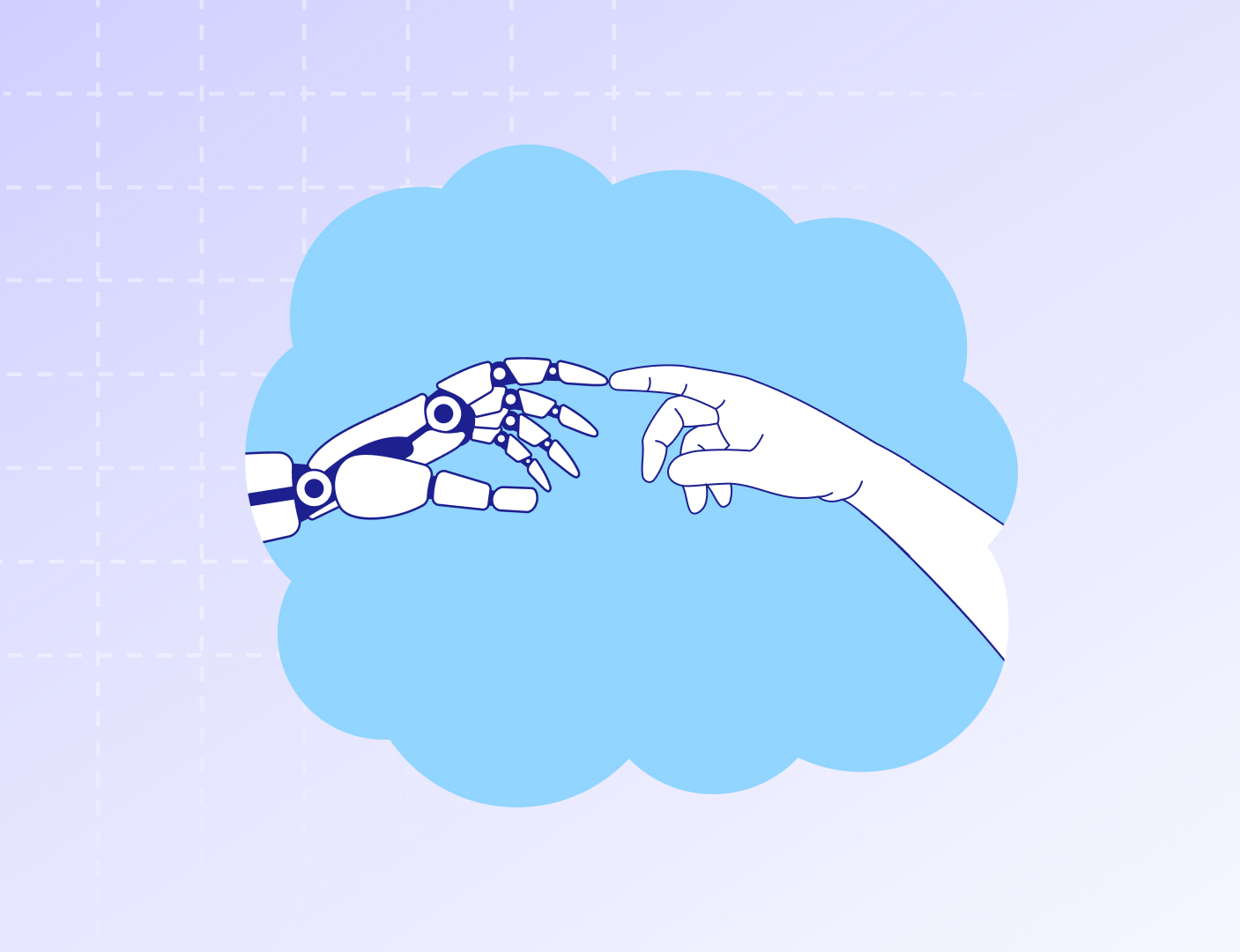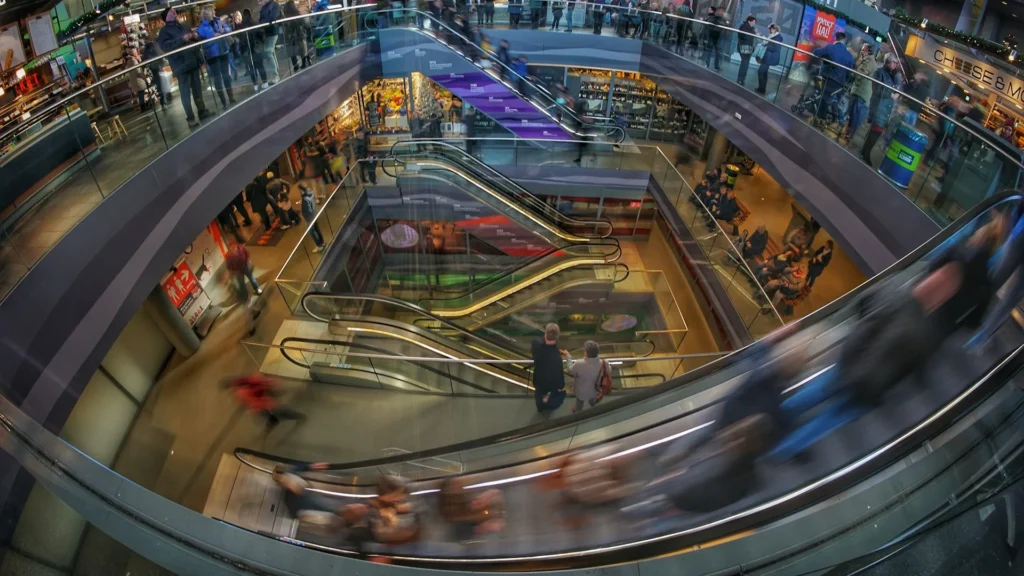In a nutshell:
- Predictive churn models use machine learning to analyze customer behavior and predict who is at risk of leaving.
- Predicting churn is critical for cost-effective customer retention and strategic decision-making.
- Churn predictions can be used to prioritize retention efforts, target at-risk customers, and optimize marketing resources.
- Machine learning models are not 100% accurate, but the potential gain outweighs the few errors.
- Automating and maintaining a predictive churn model is possible with advanced data platforms.
The exit door. The “cancel” button. The empty shopping cart.
None of these bodes well for your business. And losing customers in any of these ways is disheartening — not to mention a blow to your business’s revenue.
If you’re feeling like customers are vanishing without warning, you might be glad to hear there are options for using your customer data to find out in advance who’s at risk of churning. Predictive churn models use machine learning to analyze past customers’ behavior. They can then predict what other customers may do in the future.
This blog post will explore the power of a predictive churn model and how it can revolutionize your business. From analyzing churn rates to identifying the causes, we’ll dive deep into the importance of predicting churn. Discover how predicting churn can help you stay one step ahead, and learn how to incorporate a churn prediction model into your daily operations.
Don’t waste resources on unnecessary outreach campaigns — be proactive in customer retention. Let’s get started!

How does predictive churn modeling work?
Predicting customer churn can be done in a couple of ways. Traditionally, businesses have used their customer data to identify critical factors that strongly correlate with churn. They may create a business rule in their customer retention software that flags customers whose behavior matches those factors. Those customers might receive targeted phone calls, discounts, or other outreach to maintain their business.
However, the behavior that precedes churn often can’t be captured in a simple set of just a few factors (that an admittedly biased human selected). Instead, customers’ behavior and activities can be far more nuanced, with patterns that are much more difficult to recognize.
Difficult for humans to recognize, that is. Guess what’s excellent at identifying complex patterns in enormous datasets and predicting the future based on those patterns? AI — or, more specifically, machine learning.
In today’s world of giant datasets and accessible predictive churn software, using machine learning to anticipate customer churn is easier than ever. Your historical customer data serves as the training data for this process, letting you make the most of this invaluable resource.
Machine learning models built on this data can sort customers into two groups: those at risk of churning and those who are safe and secure. Or, even better — as in Pecan’s predictive churn models — they can assign a specific churn risk score that allows marketers, customer service teams, and others to create highly targeted, meaningful segments that respond to distinct customer needs.
Another beneficial aspect of predictive churn models is identifying the key factors that influence the churn model’s predictions. For example, you might learn that for some customers, the number of times they contacted your support team, weekly logins, and how they initially signed up for your service are all strong predictors of their churn risk.
But some of these factors will influence some customers more than others. A simple business rule doesn’t reveal individual variation, nor can it make adjustments as market conditions, customer behavior, and your data all change.
However, knowing which factors may have most influenced a customer’s likely behavior can help you tailor how you reach out to them and what they’ll need to stick around. In this way, churn prediction models with machine learning can prevent customer attrition and improve customers’ experience with your business.
Being proactive about churn and getting ahead of the problem means you unlock huge revenue potential. After all, even a small churn rate can represent a significant loss of revenue over a quarter or year. And if your customer acquisition can’t quite keep up with that attrition, things look bleak.
Why predicting churn is critical
Predictive churn modeling helps you focus your retention efforts on the customers most at risk of leaving. As Amy Gallo writes at the Harvard Business Review, “Depending on which study you believe, and what industry you’re in, acquiring a new customer is anywhere from five to 25 times more expensive than retaining an existing one.”
Keeping the customers you’ve fought to win is cost-effective and maintains a positive customer experience and brand reputation. Another analysis by finance expert Josh Chapman suggests that emphasizing customer retention efforts can increase your revenue by as much as 80% over 18-24 months, in addition to increasing your total number of customers by 1.5x. Happy customers spread the word and make your business more successful.
You can also shape more significant strategic decisions with the insights gained from predictive churn modeling. For example, if you find that interactions with customer service are a strong predictor overall of churn, it might be time to revisit aspects of that strategy. With churn resulting from poor customer service up 10% since pre-pandemic times, according to TechSee, taking a closer look at the relationship between churn and service could be invaluable.
Or perhaps diminishing activity with a specific service you offer precedes churn. Targeted reminders of that service or feature could help those customers stay active — and stay customers.
And, of course, churn prediction isn’t just for subscription-based companies, though they are especially vulnerable to customer churn. Any company where customers will do repeat business over time should work to prevent churn and be prepared to take action that supports retention.
For some businesses, even just diminished customer or user activity may be enough to raise concern. Fortunately, machine learning models for customer churn are flexible and can be configured to predict whatever “definition” of churn is most relevant for your business.
Whatever your industry, understanding customer lifecycles and building a churn prediction model using relevant data sources is crucial for improving customer retention.
Examples of churn predictions and implementation
Sounds good to know in advance which customers are at risk of churn? Awesome. But you might now wonder what exactly you should do with that information.
Typically, our customers take a few approaches to potential churn.
Prioritize retention efforts with churn predictions
First, you might prioritize your retention efforts based on churn predictions. Say you typically have sales reps or account managers contact customers or at-risk accounts to encourage repeat sales or maintain an ongoing relationship. That individual outreach can be expensive.
With predictive churn risk scores, you can rank and prioritize customers according to machine learning models’ predictions for proactive retention. That prioritization lets you reach out to the most at-risk customers first. (For another twist, you could even add customer lifetime value prediction into the mix — ensuring that you prioritize the customers who will be most valuable in the long run for your business.)
Double down on customers at risk of churn
Second, you can double down on the customers predicted to churn. Should every one of your customers get a discount offer on your top products? What if you sent that offer only to the customers identified as most at risk of churning? The customers who are going to buy … are going to buy. Spending your resources on a discount for those customers is a waste. Instead, see if you can keep those at-risk customers around by giving them an enticing offer or discount.
Case study: targeted offers double conversion rate
Our customer Hydrant saw impressive results with this approach. Pecan’s churn model, developed within just 2 weeks, examined the purchase history of numerous customers over 180 days. The model then generated churn risk scores for every customer that informed marketing messages and discounts tailored to customers’ predicted purchasing potential. Those expected to have the lowest chance of purchasing again were sent targeted offers. That group had a 2.6x higher conversion rate and a 3.1x higher average revenue per customer.
“Pecan’s predictions informed our marketing efforts, helping us reach out to the right customers and allocate spend in the right places,” says John Sherwin, CEO of Hydrant. “The models were incredibly accurate in identifying which customers would more likely respond to our offers and make new purchases.”
Obtain similar results with less resources
Finally, you can use churn predictions to help you achieve similar results with fewer resources. As we’ve already covered, customer acquisition is expensive. You’ve fought hard to win all the customers you now have, and you’d love to maintain all the revenue they’re bringing in instead of constantly spending more to keep the growth engine running.
Optimizing your marketing resources helps you do more with the same resources. Churn prediction models can provide valuable insights to marketing teams regarding which customer segments are more likely to respond positively to specific campaigns or offers. This approach enables marketing teams to focus on the segments most likely to generate desirable outcomes.
Case study: optimizing retargeting with predictions saves millions
SciPlay, a prominent mobile game publisher, has adopted this approach with Pecan’s predictive modeling. They’ve used predictions to enhance retargeting campaigns, ensuring they reach out only to the players who need a nudge to return to playing a game instead of spending money on retargeting campaigns that reach dedicated players.
“We’re able to get much better margins and invest our marketing budgets much, much more wisely with Pecan’s help,” says Evyatar Livny, vice president of marketing technologies at SciPlay.
Additionally, your investment in churn prediction models should provide better and better results over time without additional resources. Predictive churn models can continuously learn from customer behavior and feedback, allowing for the refinement of prediction algorithms over time. This iterative approach ensures that resources are allocated more effectively as the models become increasingly accurate.
Finally, by reducing churn rates and retaining existing customers, organizations can achieve substantial cost savings that would otherwise be incurred in acquiring new customers. These cost savings can then be reinvested in enhancing products or services — meaning you’re opening up new growth opportunities.
Predictive churn models play a crucial role in identifying customers who may be nearing the end of their relationship with a company and understanding the reasons behind their potential churn. By creating highly refined customer segments based on these predictions, companies can plan personalized campaigns and outreach efforts to retain customers and reactivate lapsed ones.
Couldn’t incorrect churn predictions waste our resources?
A well-built churn prediction model can do an excellent job identifying future customer behavior accurately. In the example of our customer Hydrant described above, the churn model’s predictions closely matched customers’ actual future behavior. Of the customers predicted by the Pecan model to be least likely to churn, less than 2 percent did not return to buy again. Of those customers predicted to be most likely to churn, over 83% did indeed churn.
But no matter what they’re built to do, machine learning models are rarely 100% accurate. But that’s not the goal of creating a churn prediction model. Your goal is to make more informed decisions about approaching at-risk customers. Instead of sending blanket offers to customers when you realize you have a churn issue, you can more carefully target those who really need to hear from you.
In that case, will you potentially send an offer to a customer who was not at risk of churning? Absolutely. Models do make some mistakes. However, the cost of those few “errors” is well worth the potential gain of reaching a large group of at-risk customers accurately and retaining them.
There is also always a role for human expertise in this process. A solid approach combines data-driven predictions from your churn models with the on-the-ground expertise and judgment of your human marketing, sales, and/or customer support team. Human intervention and decision-making can help identify where models may not be entirely on track and help adjust resource allocation away from customers who may not need it.

Automating and maintaining a predictive churn model
Building a customer churn model using BI tools and historical data can be tedious. Static rules would require many adjustments to data flows, data preparation, and visualizations. However, fortunately, it’s now possible to automate the data ingestion, prep, modeling, and integration of churn predictions into your existing business systems and workflows. Whether it’s a BI tool, CRM, or a predictive platform’s built-in dashboards, you should be able to quickly examine and take action on churn predictions in whatever way makes the most sense for your team.
Additionally, while machine learning models for predicting churn are powerful, they require some upkeep. The predictive model must be integrated into your day-to-day data operations, including model monitoring, evaluation, and updating. The model’s performance should be tested regularly and adjustments made to the variables it uses for predictions if necessary.
Incorporating the churn prediction model into your company’s daily workflows and data processes can help automatically flag events that increase the likelihood of churn. That means you can respond faster than ever to prevent customer churn.
Again, we’re lucky that many of these processes are now automated thanks to advanced data platforms’ easy integration capabilities and the potential to build data flows across different tools.
Getting started with predictive churn models
Predictive churn models are a real game-changer for businesses looking to optimize customer retention and reduce unnecessary outreach campaigns. By incorporating churn predictions into daily operations, companies can proactively identify churn causes, optimize marketing and sales efforts, increase ROI and productivity, and make informed decisions to retain profitable customers. You might have to dust off the exit door and (metaphorically) the cancel button occasionally, because those shopping carts will be busier than ever.
Want to see how Pecan can help you take a proactive approach to your churn challenges? Get in touch today.




